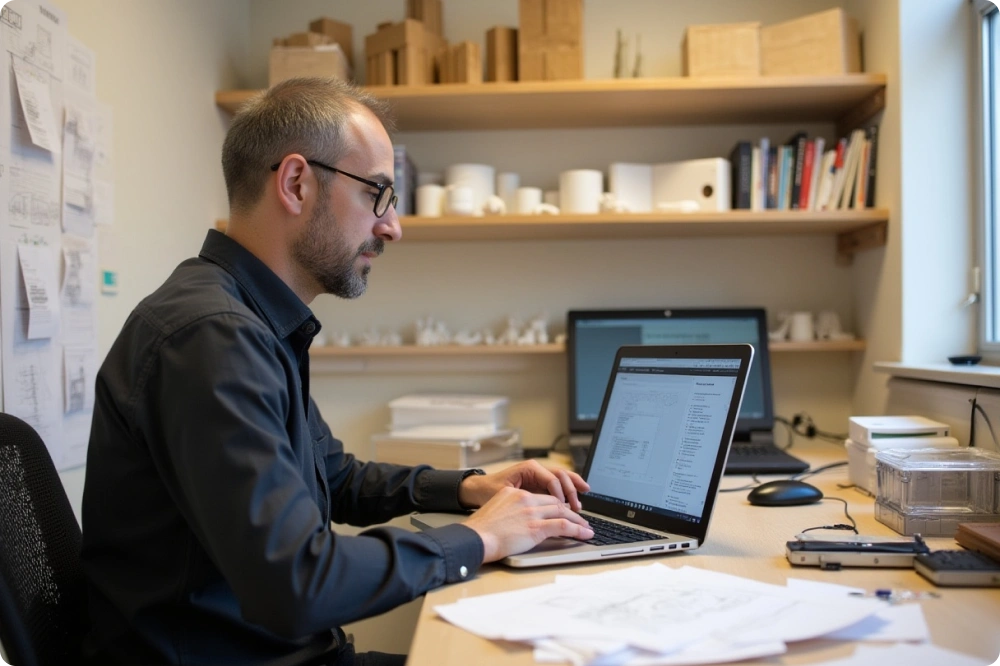Strengthening Academic and Administrative Workflows in Architecture Colleges with ERP LMS
Architecture education is unlike any other academic discipline. It demands a balance of creativity, technical knowledge, and practical experience. Students must spend time in design studios, engage in model-making workshops, visit construction sites, and present their projects before juries. Simultaneously, institutions must manage admissions, finances, timetables, faculty coordination, and accreditation requirements.
Traditional methods of administration and academic delivery often struggle to keep pace with this complexity. This is why adopting an ERP LMS for Architecture Colleges is no longer a luxury but a necessity. By integrating Enterprise Resource Planning (ERP) with a Learning Management System (LMS), institutions gain a single platform to strengthen academic and administrative workflows.
Solutions like vmedulife ERP LMS are designed with flexibility and scalability, enabling architecture colleges to operate seamlessly while delivering high-quality education.
The Unique Academic Environment of Architecture Colleges
Studio-Based Learning – Students spend hours in studios working on designs and conceptual drawings.
Practical Exposure – Site visits and workshops are integral to the curriculum.
Continuous Evaluation – Assessments are based on portfolios, juries, and presentations rather than just exams.
Interdisciplinary Curriculum – Courses cover art, design, engineering, urban planning, and environmental studies.
Heavy Documentation – Architectural drawings, CAD files, and project reports require systematic management.
These characteristics make workflow integration essential. An ERP LMS brings together students, faculty, and administrators into one connected system.
Challenges Faced Without ERP LMS
When institutions rely on traditional manual systems, they face?
Scheduling Conflicts : Overlapping classes, studio hours, and fieldwork.
Lost Documentation : Misplaced project files or incomplete student portfolios.
Communication Gaps : Delays in feedback and announcements.
Administrative Bottlenecks : Manual fee processing and data entry errors.
An ERP LMS for Architecture Colleges directly addresses these issues by automating, centralizing, and simplifying workflows.
Academic Workflows Strengthened by ERP LMS
1. Curriculum and Timetable Management
With ERP LMS :
Studios, workshops, and lectures are scheduled without clashes.
Faculty availability is matched with classroom and studio requirements.
Students receive real-time updates on schedules.
2. Project and Portfolio Submissions
ERP LMS enables students to :
Receive faculty feedback digitally with annotations.
Maintain a digital portfolio accessible throughout their academic journey.
3. Evaluation and Jury Management
Unlike traditional exams, architecture colleges rely on juries and presentations. ERP LMS provides :
Custom grading rubrics.
Digital record of jury feedback.
Transparent evaluation accessible to students.
4. Digital Learning Resources
Through vmedulife ERP LMS, students gain access to :
E-libraries of architectural case studies.
Recorded lectures for revision.
Global best practices in sustainable and urban design.
Administrative Workflows Strengthened by ERP LMS
1. Admission and Enrollment
Online applications with automated shortlisting.
Transparent fee structures and receipts.
Digital document verification
2. Finance and Fee Management
Online payment gateways for students.
Automated payroll for staff and faculty.
Real-time financial reports for administrators.
3. Human Resource Management
Faculty workload management.
Training and development records.
Performance tracking dashboards.
Student Benefits from Stronger Workflows
For architecture students, ERP LMS means :
Transparency : Clear visibility of project deadlines and grades.
Efficiency : Easy access to resources and submission portals.
Engagement : Participation in discussions and peer learning.
Faculty Benefits from Stronger Workflows
Faculty often juggle between teaching theory and mentoring design projects. With ERP LMS :
Time-Saving : Attendance and grading automated.
Better Mentorship : Data insights help guide student progress.
Research Sharing : Faculty can upload papers and design references.
Collaborative Teaching : Cross-department collaboration becomes easier.
Management Benefits from Stronger Workflows
For administrators and management teams, ERP LMS ensures :
Centralized Control : One dashboard for student, faculty, and financial data.
Strategic Insights : Reports on performance, attendance, and finances.
Improved Decision-Making : Data-driven governance.
Scalability : Ability to expand without increasing administrative burden.
Why vmedulife ERP LMS is the Right Choice?
vmedulife ERP LMS stands out because it :
Offers modular features tailored to architecture colleges.
Is cloud-based, enabling anytime, anywhere access.
Provides secure and scalable solutions for data management.
Supports architecture-specific workflows like studio submissions and jury evaluations.
Enhances collaboration between stakeholders with user-friendly portals.
Conclusion
Strengthening academic and administrative workflows is vital for architecture colleges to thrive in today’s competitive educational environment. An ERP LMS for Architecture Colleges integrates design-focused learning with efficient institutional management. With vmedulife ERP LMS, institutions can achieve seamless workflow integration, ensuring that students, faculty, and administrators work in harmony toward a common goal: producing the next generation of skilled and future-ready architects. Discover how vmedulife ERP LMS can transform the way your architecture college operates—building stronger workflows for stronger outcomes.

